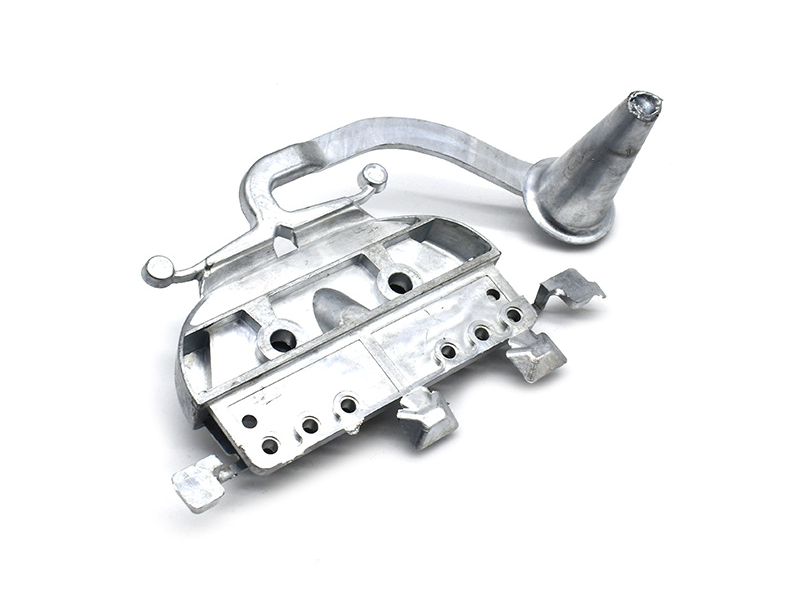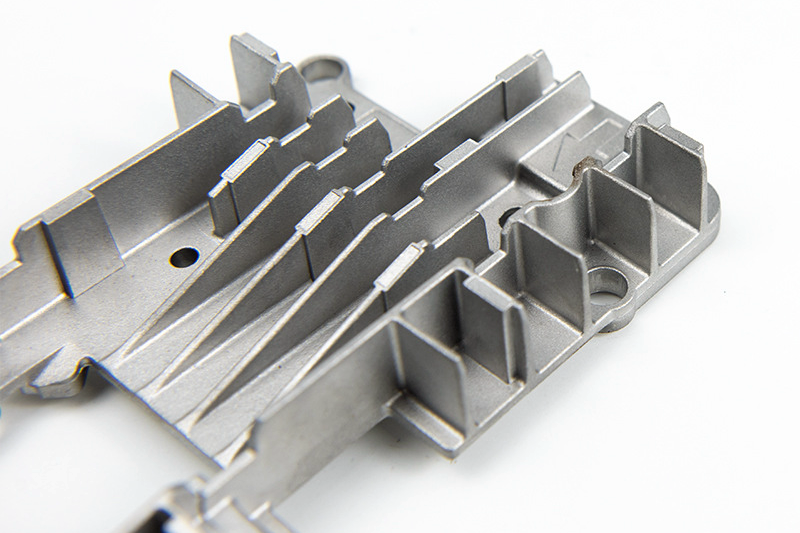Reliable Electronic Component Manufacturing for Automotive
Introduction to Automotive Electronic Components
Automotive electronic components have become foundational to modern vehicle design. From powertrain control units and infotainment systems to electric vehicle battery management and ADAS sensors, their reliability directly impacts vehicle safety, efficiency, and performance.
High-precision housings, connectors, sensor enclosures, and shielding components are now essential in fulfilling the demanding requirements of harsh automotive environments. Manufacturers must integrate advanced production techniques with rigorous quality control to meet these challenges. Explore how automotive industry manufacturers achieve dependable performance through precise custom parts manufacturing.
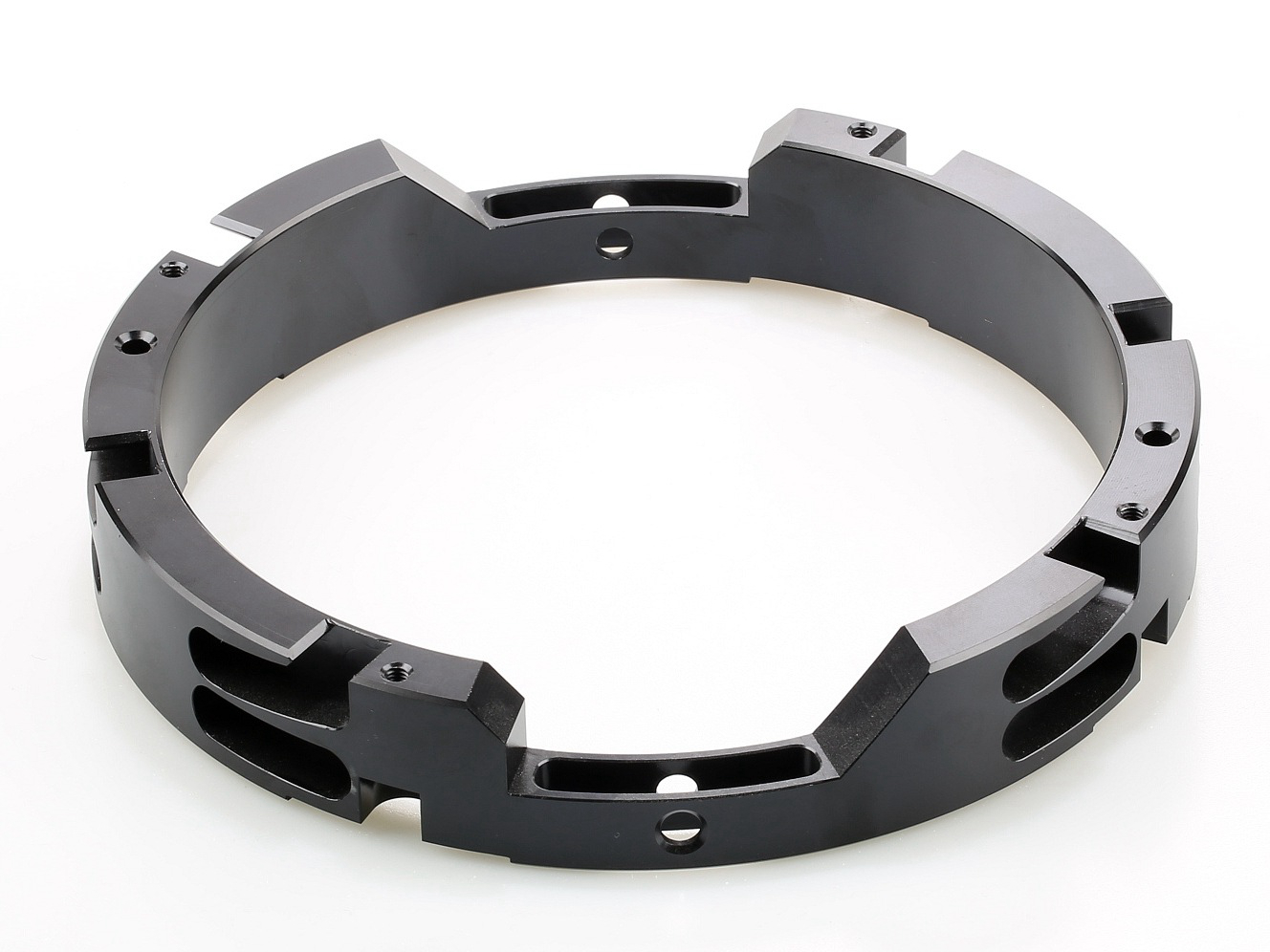
Material Selection for Automotive Electronics
Choosing the right material is critical to ensuring component durability, thermal stability, and electrical performance across the lifespan of a vehicle. Engineers must balance properties such as corrosion resistance, strength-to-weight ratio, thermal conductivity, and moldability based on component function and installation environment.
Common Housing and Structural Materials
Aluminum alloys are the most widely used for metal housings and brackets due to their lightweight nature and thermal conductivity. Alloys such as A380 and 383 (ADC12) offer excellent castability and are optimized for complex geometries with tight tolerances. For example, A380 aluminum die-cast housings are frequently applied to control unit enclosures exposed to thermal cycling and vibration.
Aluminum A380 die casting is particularly suited for high-volume production of ECU shells and sensor mounts. Using aluminum 383 (ADC12) allows fine detail replication in connectors while maintaining dimensional stability.
On the polymer side, thermoplastics such as ABS, PBT, and polycarbonate (PC) are selected for their dielectric properties and resistance to automotive fluids. ABS, for instance, is widely used for sensor covers and internal brackets due to its toughness and ease of molding.
Injection-molded ABS plastic provides a cost-effective solution for low-heat electronic compartments, whereas PBT and PC materials are chosen when higher temperature resistance or structural rigidity is needed. These thermoplastics also enable snap-fit features, reducing assembly steps.
Conductive & Shielding Materials
Engineers utilize conductive enclosures and shielding layers to mitigate EMI (Electromagnetic Interference), which can disrupt signal fidelity in densely packed electronics. Copper alloys, such as brass or phosphor bronze, are often stamped or machined into terminals or contact elements.
Zinc alloys play a dual role in this space, offering structural support and electromagnetic shielding. Zinc die casting is frequently adopted for EMI housings and connector shells, where form stability and conductive plating compatibility are critical.
For high-frequency systems like radar sensors, shielded enclosures may include integrated grounding tabs and are often finished with conductive coatings or plated metallic films for extended durability.
Thermal & Environmental Stability Considerations
Automotive electronics must operate reliably across wide temperature ranges -40°C to 125°C in typical engine bay conditions. Material selection must, therefore, address thermal expansion, flame retardancy, UV resistance, and moisture ingress.
High-grade engineering plastics like PPS or PEEK offer dimensional stability at elevated temperatures and resist degradation from exposure to automotive fluids. Materials with low water absorption and hydrolytic stability are prioritized in humid environments.
Meanwhile, thermal conductivity becomes paramount for components near heat sources, such as power inverters or engine control units. Die-cast aluminum with integrated fins or heat spreaders is often used to assist in the passive cooling of internal electronics.
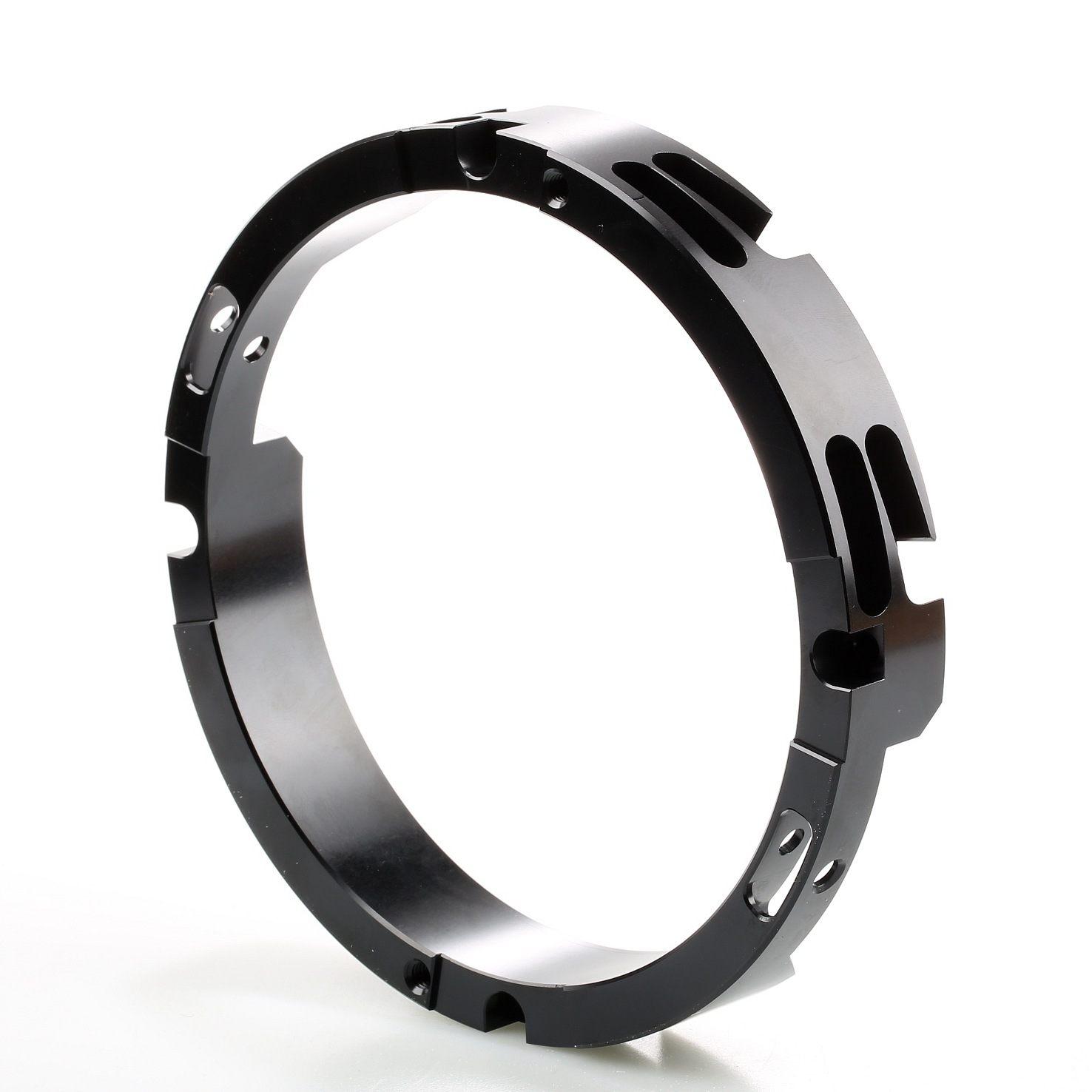
Manufacturing Techniques for Reliable Component Housings
To ensure electronic vehicle components perform reliably under extreme conditions, manufacturers employ precision manufacturing techniques. These methods are selected based on required dimensional tolerances, production volume, and the complexity of part geometry. Three core processes dominate the field: die casting, injection molding, and CNC machining.
Die Casting for Metal Enclosures
High-pressure die casting is widely used for aluminum and zinc electronic housings. It enables the mass production of intricate, thin-walled parts with excellent dimensional repeatability. Alloys such as A380 and ADC12 (383) are especially suitable for connector frames, heat-dissipating shells, and integrated brackets.
Aluminum die casting is favored in ECU housings due to its mechanical strength, corrosion resistance, and thermal conductivity. Engineers often incorporate integral heat sink features or grounding ribs into the mold design to enhance performance without increasing post-processing.
Zinc alloys provide higher casting precision and reduced tooling wear for smaller components such as USB connectors, switch housings, and EMI shields. Their lower melting temperature also reduces cycle time, making them ideal for high-volume, low-variation production.
Injection Molding for Insulating Bodies
Plastic housings, sensor caps, and internal brackets are often fabricated via thermoplastic injection molding. This process supports high-volume parts production with complex internal features, snap fits, and undercuts. Materials such as ABS, PBT, and PC are selected for electrical insulation and dimensional stability.
Plastic injection molding enables precise control over wall thickness, draft angles, and internal geometry, ensuring consistent fitment with PCBs or metal inserts. Plastic over-molding enhances damping and robustness for components exposed to continuous vibration, noise, or thermal cycling.
Overmolding combines multiple materials in a single molding cycle—often a rigid core with a soft elastomer exterior. This is ideal for manufacturing switch housings, connector grips, or grommet seals that require ergonomic handling or vibration isolation.
CNC Machining of Connector Terminals
CNC machining offers unmatched flexibility and accuracy for low-volume or precision-critical parts such as terminal pins, threaded connectors, or small EMI plates. Engineers can achieve ±0.01 mm tolerances on small-batch parts, including features like micro slots, blind threads, or high-aspect-ratio cavities.
CNC machining prototyping is also used during product development or in hybrid production strategies, validating machined prototypes before transitioning to die casting or molding. In such cases, design feedback can be quickly incorporated to optimize manufacturability.
Surface Finishing for Functional Reliability
In the automotive sector, surface treatments are not merely cosmetic but functional enhancements critical for durability, corrosion resistance, electromagnetic shielding, and dimensional stability. Each finishing process is selected based on substrate material, environmental exposure, and the component's role in the electronic system.
Corrosion Resistance Coatings
Automotive environments often involve exposure to moisture, salt spray, engine fluids, and temperature cycles. Without proper protection, corrosion can compromise electronic enclosures and connector integrity.
Black oxide coating is commonly applied to zinc and steel parts for a corrosion-resistant, non-reflective surface. This finish offers moderate rust protection and excellent paint or adhesive base compatibility. In many sensor housing projects, black oxide coating is specified due to its dimensional stability—no buildup or distortion occurs during treatment.
Anodizing is another widely used method for aluminum enclosures. It forms a hard, non-conductive oxide layer that improves wear resistance and provides an ideal base for post-treatments like painting or sealing. It's especially suitable for engine-mounted ECUs or inverter covers exposed to high thermal loads.
EMI Shielding Layers
To contain or deflect electromagnetic interference, enclosures often receive conductive coatings. This includes metallic paint layers, electroless nickel plating, or vacuum-deposited chrome finishes. These provide continuous surface conductivity that complements grounding paths designed into the PCB layout.
For die-cast aluminum or zinc parts, chrome plating enhances EMI protection and improves the component's aesthetic appeal and wear life, which is especially important in visible interior electronics.
Marking and Traceability
Laser engraving or pad printing directly encodes component ID, batch codes, or QR tags onto housings. These features are critical in traceability systems aligned with ISO/TS standards and enable automated inspection or service documentation during the vehicle lifecycle.
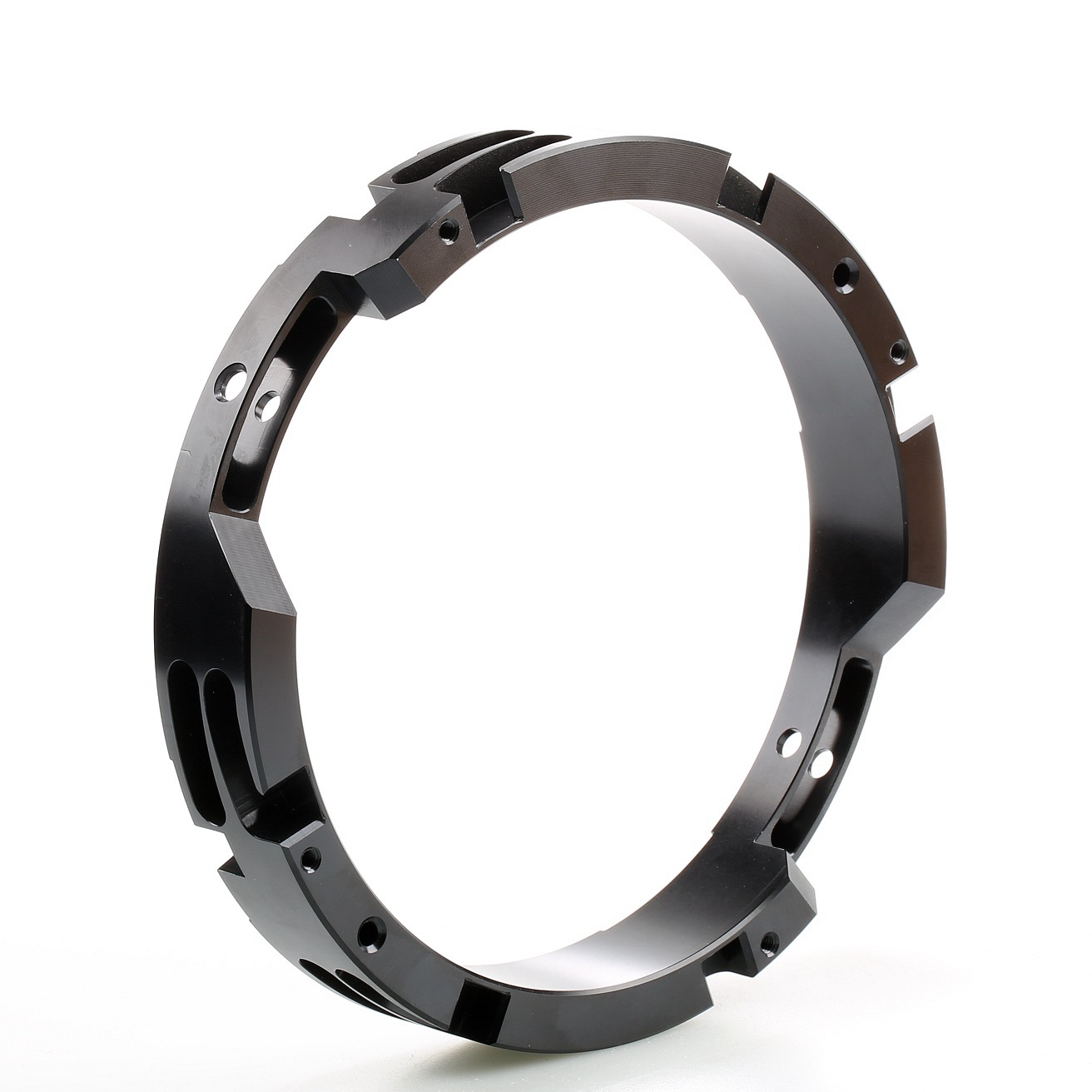
Quality Control and Testing in Automotive Electronics
In automotive electronics manufacturing, reliability hinges on material and process selection and a robust quality control system. These systems ensure that every housing, connector, and enclosure meets dimensional, mechanical, and functional specifications, especially under long-term stress conditions.
Dimensional Inspection
Dimensional accuracy is vital to guarantee fit with printed circuit boards, mating connectors, and sealing interfaces. Noncontact 3D scanning and coordinate measuring machines (CMMs) are used for high-volume production to verify key tolerances.
CMM inspection is crucial for verifying the flatness of sealing surfaces on aluminum die-cast housings or ensuring the proper position of mounting bosses in plastic molded connectors. These high-precision inspections catch minor warpages or sinks that could compromise sealing or electrical connections.
Laser scanning systems are used for parts with complex geometries, such as over-molded switch assemblies or multi-plane heat sink covers, enabling full-surface deviation analysis.
Functional Testing
Electronic enclosures are subject to harsh qualification tests replicating real-world conditions. These include:
Thermal cycling: –40°C to +125°C, often over 1,000 cycles
Humidity exposure: 95% RH at 85°C to test insulation degradation
Vibration and shock: Frequency sweeps up to 50g to simulate driving loads
Ingress Protection (IP) testing: IP67 and above for sealed connector bodies
Electrical continuity: Verification across terminals after environmental exposure
Plated enclosures are further tested for EMI shielding effectiveness using RF interference chambers and conductivity probes.
Reliability Standards and Certification
Depending on the application, automotive electronics suppliers must meet global standards such as IATF 16949, ISO 9001, and IPC-A-610 Class 2 or 3. Each batch is traceable via serial coding, and manufacturers provide complete quality documentation, including First Article Inspection Reports (FAIR), Process Capability Index (CpK), and Statistical Process Control (SPC) charts.
Advanced spectral analysis tools like direct reading spectrometers ensure alloy purity in die-casting operations. These tools allow real-time verification of material composition on the production floor, reducing the risk of off-spec batches and improving process responsiveness.
By implementing rigorous in-line and post-process inspection protocols, manufacturers ensure that each electronic component meets safety and performance standards throughout the vehicle's service life, even under prolonged thermal, mechanical, and chemical stress.
Case Studies: Real-World Automotive Electronic Component Projects
To better illustrate the principles of material selection, process control, and performance validation in practice, the two real-world projects involving automotive electronic component manufacturing are below.
Case 1: ECU Aluminum Die Casting with Precision Milling
A Tier 1 automotive supplier required robust aluminum housings for an engine control unit (ECU) operating in high-vibration and high-temperature zones near the combustion chamber. The chosen solution involved A380 aluminum die casting and CNC milling to achieve a flat sealing surface within ±0.02 mm tolerance.
Post-casting, the parts were subject to heat treatment to stabilize grain structure and reduce residual stress. A multi-step powder coating process was applied to improve corrosion resistance and maintain a matte finish suitable for label printing. Final inspections confirmed IP67 sealing performance and EMI shielding compliance.
This project is detailed in our showcase on ECU housing machining and finishing, highlighting the role of secondary machining in achieving electrical and environmental reliability.
Case 2: Sensor Connector with Insert Molding and Laser Marking
An automotive sensor supplier required custom connectors combining electrical terminals with a sealed polymer housing. Using insert molding, brass terminals were over-molded with flame-retardant PA66. Key challenges included ensuring pin alignment during molding and achieving void-free encapsulation.
Laser engraving was used to apply traceability markings on the part's flank, meeting OEM requirements for anti-fraud and lifecycle monitoring. All assemblies passed salt-spray corrosion and vibration fatigue tests under –40°C to +150°C cycling.
This project demonstrated the integration of tooling precision, material compatibility, and advanced molding in delivering high-reliability parts for safety-critical automotive applications.
Design for Manufacturability (DFM) in Automotive Electronics
Design for Manufacturability (DFM) is an essential engineering strategy in automotive electronics that ensures the transition from concept to mass production is efficient and cost-effective. DFM focuses on minimizing complexity, reducing cycle time, and optimizing tolerance stacking for electronic housings, connectors, and modules.
Integration of Electrical and Mechanical Design
Modern automotive electronic components often combine thermal, electrical, and mechanical functions in a single unit. DFM requires early collaboration between electrical engineers and mechanical designers to prevent downstream manufacturability issues.
For example, when designing a PCB enclosure, engineers must consider:
Boss height tolerance for PCB mounting
Gasket groove dimensions for IP sealing
Stand-off heights to prevent shorting or vibration fatigue
Heat sink integration and airflow channeling
Simulating assembly scenarios and applying GD&T standards can identify potential misalignments or interferences before tooling investment.
Tooling-Friendly Geometry
DFM emphasizes draft angles, uniform wall thickness, and radiused corners to ensure clean ejection from molds or dies. This principle is especially critical for injection-molded housings and die-cast shells. Rib and boss placement should avoid thick sections that cause sink marks or internal voids.
When using plastic injection molding, rib-to-wall ratios are kept below 60%, and gate locations are optimized to prevent weld lines across functional areas. Insert molding requires special attention to the insert retention features and mold flow dynamics.
Assembly Simplification
DFM also targets the reduction of part count and fastener types. Snap-fit designs, ultrasonic welding zones, and integrated strain reliefs can eliminate screws and secondary assemblies, reducing takt time on the production line and improving yield consistency.
By aligning design decisions with production constraints, manufacturers avoid costly redesigns and achieve consistent quality across large production volumes.
